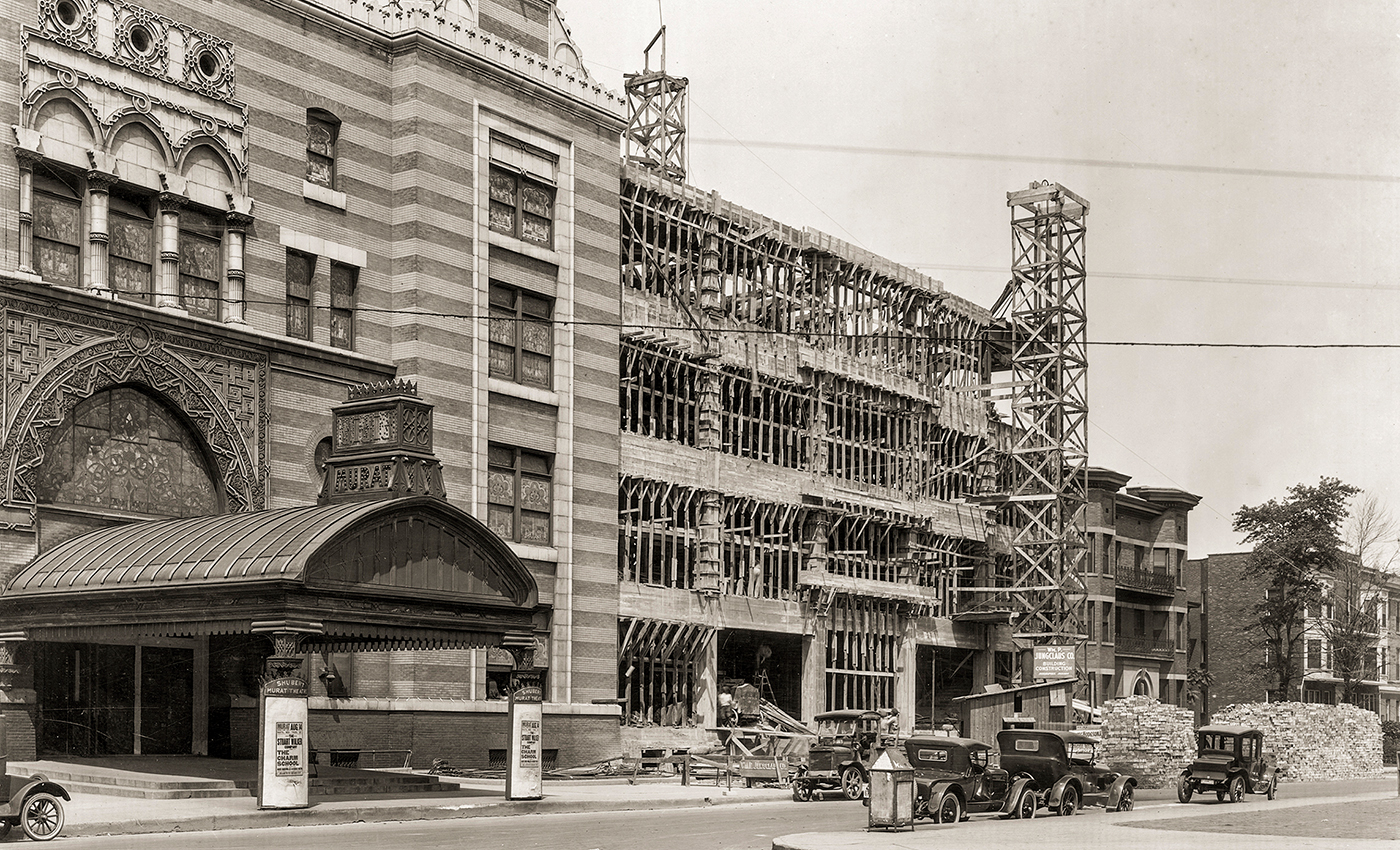NEWS
Jungclaus-Campbell Construction Co. Created Legacy of Landmarks
A new photo collection from Indianapolis’s oldest general contractor provides a unique perspective on construction of some of the state’s greatest landmarks.

Shaping a City
It’s safe to say Indianapolis would look very different without the Jungclaus-Campbell Construction Co. Founded in 1875, the firm is responsible for many of the capital city’s highest-profile landmarks including Madam C.J. Walker Building, Indiana State Library, the Illinois Building, Indiana Repertory Theatre, Murat Shrine Temple, the Coca-Cola Bottling Plant and its additions, Perry Stadium, and—on Monument Circle alone—the Guaranty Building, Columbia Club, and Circle Tower.
Beyond its robust portfolio of commercial buildings, schools, and churches in Indianapolis, Jungclaus-Campbell took on other projects around the state, including an addition to French Lick Hotel, the Purdue University’s Agriculture Building in West Lafayette, and the now-demolished Terre Haute House, among others.


Researching Jungclaus’s history became a passion project for Ed Fujawa, author of the book Vanished Indianapolis, who was invited by neighbor and sixth-generation company owner Bill Nagler to see the records kept at Jungclaus’s Indianapolis offices. “He knew I had started writing history articles for our neighborhood newsletter,” says Fujawa. “I went downtown, and they had all this stuff laid out and I realized, this is not going to be a one-day project.”
Spanning the company’s work from the early 1900s to the 1980s, the collection proved to be a treasure trove of resources related to construction of some of the city’s greatest landmarks, including ledgers with project estimates and bid details, and albums documenting buildings in various stages of construction and deconstruction.
The records inspired a series of articles on Fujawa’s blog Class 900 exploring the history of the Jungclaus family and deeper research into the company’s high-profile commissions, such as the Art Deco-style Circle Tower completed in 1930 on Indianapolis’s Monument Circle. Because the firm documented buildings it would demolish before beginning construction, the collection included images of the tower’s predecessors: the State Savings and Trust Company and Franklin Building.

Looking at newspaper accounts of Circle Tower’s construction, Fujawa discovered the difficulties the firm had in demolishing the former bank on site, stymied by the building’s steel-reinforced concrete foundation and concrete and metal vault. “The vault and its concrete foundation did not want to go easily, and Jungclaus’s demolition crews spent several weeks chipping away at the concrete,” he writes in a blog post about the project. After days of attacking the foundation with sledgehammers and drills, workers blasted the site with dynamite.
Today, the Jungclaus-Campbell collection is available to anyone with Internet access. The University Library of Indiana University-Purdue University Indianapolis worked with the firm in 2023 to digitize the records and photographs. Not only do the images provide a unique perspective on construction of some of the state’s greatest landmarks, they also reveal buildings that have been lost from the surrounding landscape. Company records include notes on project architects and construction costs, potentially filling in missing gaps for researchers. “They captured a moment in time for these buildings in Indianapolis’s history,” says Deedee Davis, digital scholarship services specialist with Herron Art Library. “It’s a treasure to any architectural historian.”
“It’s a powerful experience for me to see those people who were physically working on these old jobs,” says Nagler. “Then as now, this company is not just a bunch of brick buildings on Massachusetts Avenue. It’s the people who work in the office and out in the field who put the work in place.”

The company’s offices anchor the historic Capitol City Planing Mill (top) on Massachusetts Avenue that William P. Jungclaus bought for the business in 1895. PHOTO: Evan Hale
Jungclaus-Campbell still occupies the 1865 Capitol City Planing Mill on Indianapolis’s Massachusetts Avenue. William P. Jungclaus bought the building for the business in 1895. There, the company could create cabinetry, windows, doors, trim, and other millwork for its various projects. Located just steps from the Coca-Cola Bottling Plant later constructed by the firm, today the complex is a mixed-use development anchored by the company’s offices.
Learn more about the rich history of Jungclaus-Campbell and its extraordinary archives through an illustrated talk presented by Bill Nagler, Ed Fujawa, and Deedee Davis at Indiana Landmarks Center on March 14, 2024.
This article first appeared in the March/April 2024 issue of Indiana Preservation, Indiana Landmarks’ member magazine. Learn more and subscribe.
Stay up to date on the latest news, stories, and events from Indiana Landmarks, around the state or in your area.
